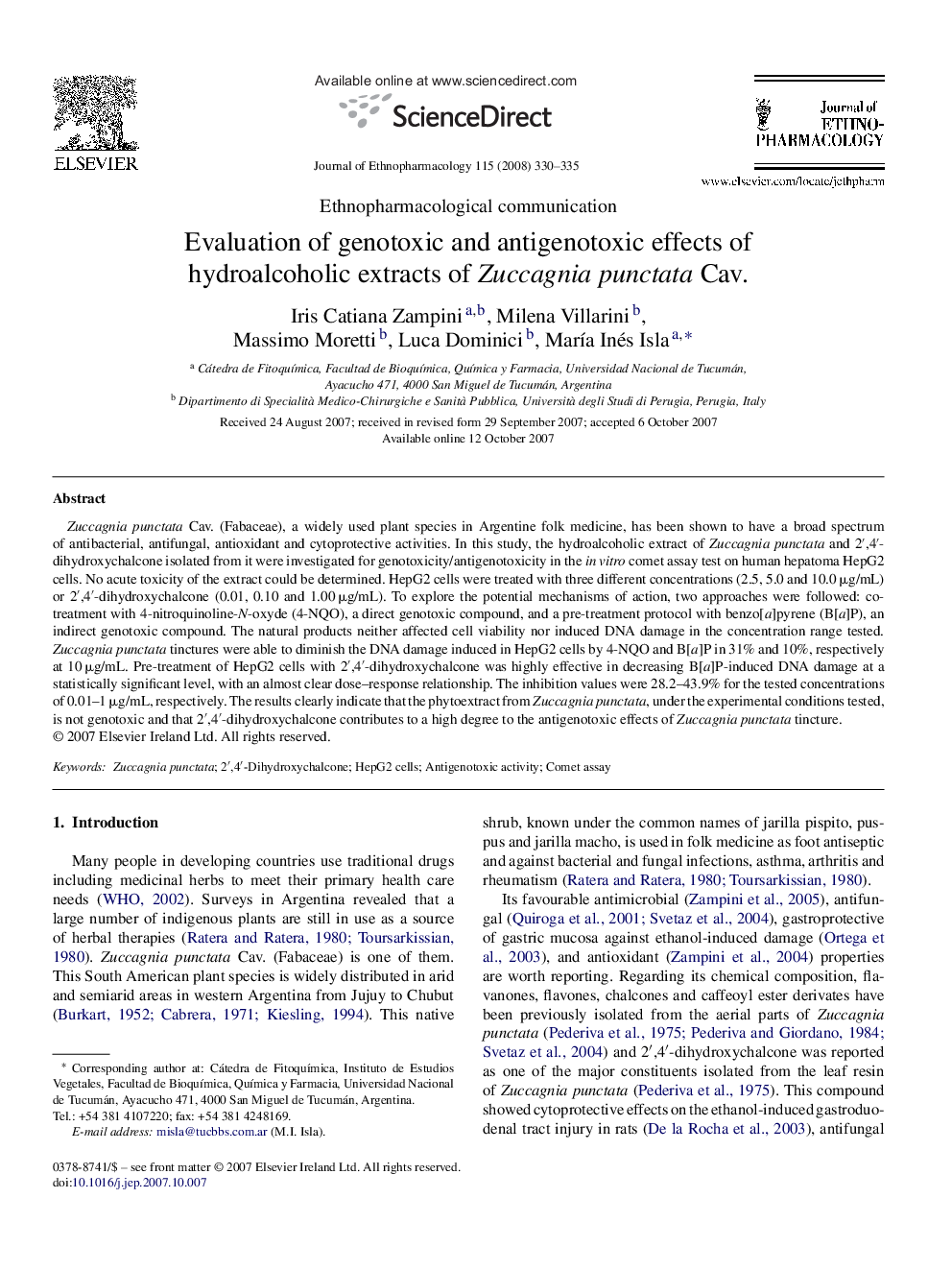| Article ID | Journal | Published Year | Pages | File Type |
|---|---|---|---|---|
| 2547479 | Journal of Ethnopharmacology | 2008 | 6 Pages |
Zuccagnia punctata Cav. (Fabaceae), a widely used plant species in Argentine folk medicine, has been shown to have a broad spectrum of antibacterial, antifungal, antioxidant and cytoprotective activities. In this study, the hydroalcoholic extract of Zuccagnia punctata and 2′,4′-dihydroxychalcone isolated from it were investigated for genotoxicity/antigenotoxicity in the in vitro comet assay test on human hepatoma HepG2 cells. No acute toxicity of the extract could be determined. HepG2 cells were treated with three different concentrations (2.5, 5.0 and 10.0 μg/mL) or 2′,4′-dihydroxychalcone (0.01, 0.10 and 1.00 μg/mL). To explore the potential mechanisms of action, two approaches were followed: co-treatment with 4-nitroquinoline-N-oxyde (4-NQO), a direct genotoxic compound, and a pre-treatment protocol with benzo[a]pyrene (B[a]P), an indirect genotoxic compound. The natural products neither affected cell viability nor induced DNA damage in the concentration range tested. Zuccagnia punctata tinctures were able to diminish the DNA damage induced in HepG2 cells by 4-NQO and B[a]P in 31% and 10%, respectively at 10 μg/mL. Pre-treatment of HepG2 cells with 2′,4′-dihydroxychalcone was highly effective in decreasing B[a]P-induced DNA damage at a statistically significant level, with an almost clear dose–response relationship. The inhibition values were 28.2–43.9% for the tested concentrations of 0.01–1 μg/mL, respectively. The results clearly indicate that the phytoextract from Zuccagnia punctata, under the experimental conditions tested, is not genotoxic and that 2′,4′-dihydroxychalcone contributes to a high degree to the antigenotoxic effects of Zuccagnia punctata tincture.
